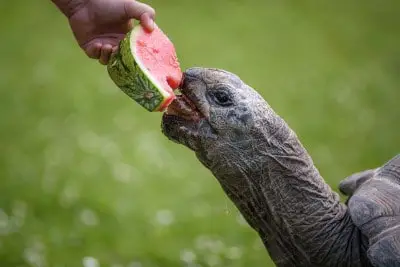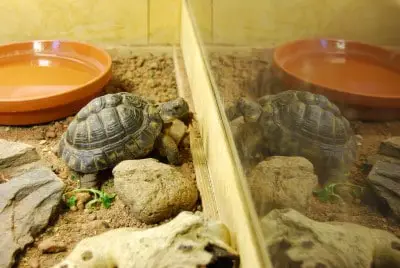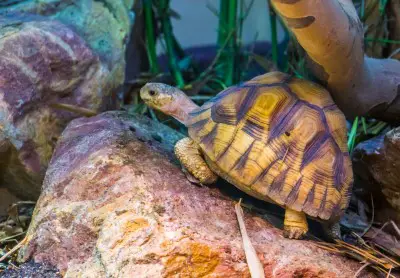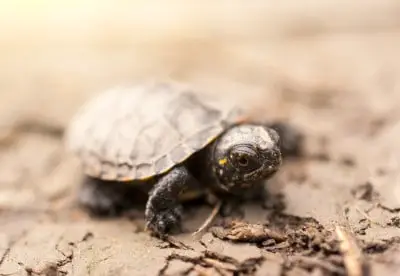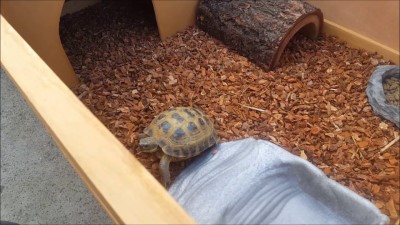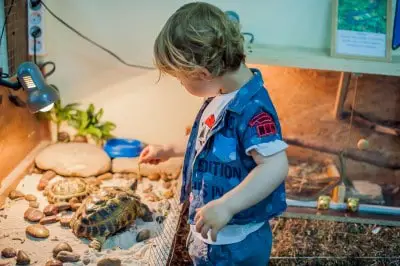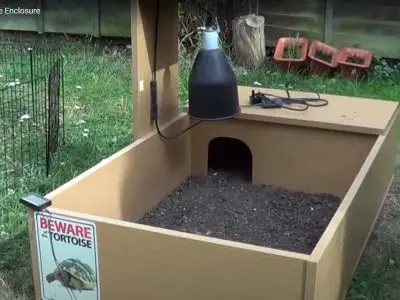Despite being hardy creatures, tortoises are still delicate, such that any changes in their environment can lead to loss of appetite. Your pet’s health may worry you if it doesn’t eat as usual. Since food is vital for the reptile’s growth and survival, going for long without it may be fatal.
If your pet tortoise is not eating, it may be seriously ill. Also, it may be slipping into hibernation. Your pet may also be having issues with its environment, such as low lighting and unfavorable temperature. Lastly, it may dislike the taste or smell of the food you provide.
Every owner wants their tortoise to be healthy and happy, but this can’t happen if your pet has a poor appetite. Therefore, we will aim to help you understand the causes and remedies for appetite loss to help your pet get back to normal. Read on as we try to help you better understand your pet.
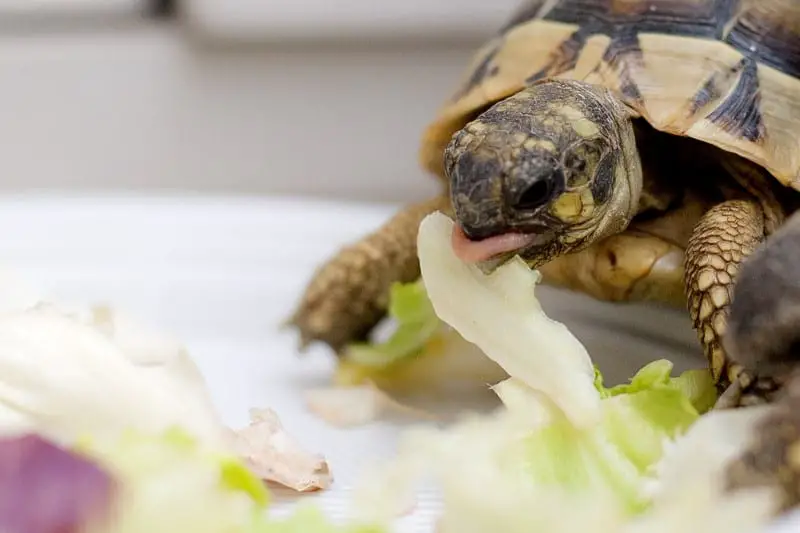
Reasons Your Pet Tortoise Has Lost Its Appetite
Your pet refusing to eat is a significant concern since it directly affects its health. It is particularly alarming if it happens suddenly. This occurrence is primarily a result of changes in their enclosure or bodies. Take a look at the following major causes for your tortoise’s appetite loss.
1. Food preference
One innocent reason for not eating is because they dislike the food you provide. If you introduce a new item in the diet, your pets may avoid it, not knowing what it is or because they don’t like the taste. It doesn’t mean that your pet is picky, only that it may not recognize the item as food.
Also, if it finds it bland or stale, it may not eat it. The reptiles use smell to identify food; hence, they will avoid eating anything with an unpleasant smell. The issue is prevalent with pellets and other supplements.
Read more about Can a Tortoise Eat Bread.
2. Habitat
Another reason why your tortoise may be avoiding food is due to changes in the environment. When you bring in a new tortoise or place your pet in a new tank, it may have appetite changes. Wild tortoises, in particular, have trouble fitting into their new pet status. They quickly get stressed because they find their new habitat overwhelming.
Reconciling with all these new changes may take a while. In the meantime, the best you can do is find ways to reduce the stress and be patient that they will soon come around. Take some time to learn about your pet to find out what they like and provide it. Soon, they will get more comfortable and start eating normally.
3. Lighting
Your pet needs adequate ultraviolet light as it helps in the absorption of vitamin D. This nutrient is crucial for strong and healthy shells and bones. Therefore, experts advise that you let your pet tortoise bask in the presence of a UV source to enable it to utilize calcium for bone development, improved appetite, and general body activity.
Calcium deficiency makes the tortoise’s bones weak, and since they carry their heavy armor around, they consequently feel excruciating pain. This feeling, in turn, interferes with their appetite, and they are likely to avoid food entirely.
4. Temperature
Tortoise, unlike humans, are cold-blooded; hence, the environment majorly determines their body temperatures. If they need heat, they bask in the sun and hide in the shade when it gets too hot. They require optimal temperatures to improve their body metabolism and allow their body systems to function normally. However, when the temperature enormously changes, the tortoise can have behavioral changes like reluctance to eat.
On the other hand, low temperatures in the enclosure can initiate hibernation since their system can’t function under icy temperatures. During this time, it can go for months without food. The only way for the reptiles to achieve optimal heat is by the use of external heat sources.
When their tanks get too cold, you will find them cuddling up in warmer parts and staying put for a while. If your pet has trouble eating, you can determine whether it is because of problems with the temperature levels.
5. Hibernation
Tortoises hibernate for months during harsh weather. At this time, they go without eating as they slow down their metabolism until the end of the period. Naturally, they will refuse to ingest anything until the process is complete.
If you find your tortoise lethargic with drastic appetite loss, the chances are high that it may be slipping into hibernation. With more research and consultations, you can tell what is going on with your pet.
When they emerge after the period, they are dehydrated and look for water first. Therefore, it may take some days before going back to eating normally. Owners provide a lot of water for them and when they regain their appetite, feed them foods with a lot of water content like vegetables.
Before hibernation, you need to give your tortoise ample time to slip into the process. Some owners assume that their pets are normal, even when they have all the signs of a hibernating reptile.
Therefore, they may end up feeding them as usual, forcing the animals to stay awake, which takes a toll on their health. Their bodies dictate when they must hibernate, and if you interfere with the process, they may have health-related issues like stunted growth and kidney problems. Remember that some tortoises don’t hibernate; you can consult an expert before you force them to do it and harm them in the process.
6. Illnesses
Illnesses are the leading cause of appetite loss among reptiles. If you are confident that your pet is not hibernating and its environmental conditions are sufficient, then the only explanation is that it has health-related issues.
By close observation, you can tell that something about your pet has changed. Look at the eyes, nose, skin, and shell. If you see reddening, discharges, or discolorations, your pet may be severely ill, interfering with its appetite. If you also notice a change in the excrement’s appearance or frequency, your pet may have an organ problem.
Your pet tortoise may be suffering from stomatitis. Stomatitis forms mouth sores and may affect the throat. This condition makes it problematic for the tortoise to eat because of the sores.
Secondly, your tortoise may have a parasite infestation in the intestines. You can detect it by looking for traces of warms in their droppings. Another severe illness is a respiratory infection. This issue manifests as an oral or nasal discharge and can make your pet too ill to eat. If you suspect that they are sick, it is best to contact a tortoise expert for treatment. If not, your pet will gradually suffer, fail to eat, get weak and, in the worst case, lose its life.
Read more about 9 Signs Your Tortoise Is Dying.
7. Slow Digestive System
Food digests slowly in tortoises than in humans. The animal has to eat according to how much its body can take. If they overeat, they must wait a while before their system can accommodate more food.
Therefore, it is normal to find your tortoise reluctant to eat after a heavy meal. The waiting can go on for up to two days. You don’t have to be alarmed in such cases because your pet is healthy and has sufficient food reserves. Eventually, it will go back to feeding as usual.
Solutions For Your Tortoise To Regain Its Appetite
As soon as you find out what is happening to your buddy, it becomes easy to find practical solutions. Your aim is to make them eat as much as possible to regain the energy they lost. However, for best results, you may have to practice patience.
If your tortoise has issues with the food you provide, it may be time to spice up their diet. Experiment with different types and give them treats too to see whether something will change. You can also give them brightly colored fruits and vegetables to gauge their reaction. They are naturally attracted to bright colors, which encourage them to eat. You may also try providing live foods such as protein-rich bugs and worms.
If the unfavorable temperature is the issue, it is wise to provide alternative heat sources like basking lamps or heat pads. It will ensure that the tortoise gets an area to heat up when it gets too cold. Additionally, you can frequently check the temperature levels and adjust them accordingly.
The same applies to lighting; you need to provide proper UV lighting for their enclosure. You can set up light-emitting bulbs in their enclosure, considering the type of habitat they recognize.
It is also vital to keep your pets in hygienic conditions by regularly cleaning up after them. By thoroughly cleaning them and their enclosure, you can effectively keep disease-causing parasites at bay.
Most importantly, if your pet shows any signs of illness, the best cause of action is to take them for medical examination. As soon as they are in perfect health and their conditions are suitable, your pet will go back to eating as usual.
In Summary
To effectively help your pet, you first need to understand why they are not eating, and from there, you can devise a solution. There are several explanations why your tortoise has troubles with its appetite. The good news is that not all of them are fatal.
However, there are still some severe factors, such as illnesses, that can put your pet’s life at risk if left unsolved. Other times, their living conditions may be unfavorable. You can help the situation by providing the best living environment, and if due to illnesses, you can consult a vet for the way forward.

